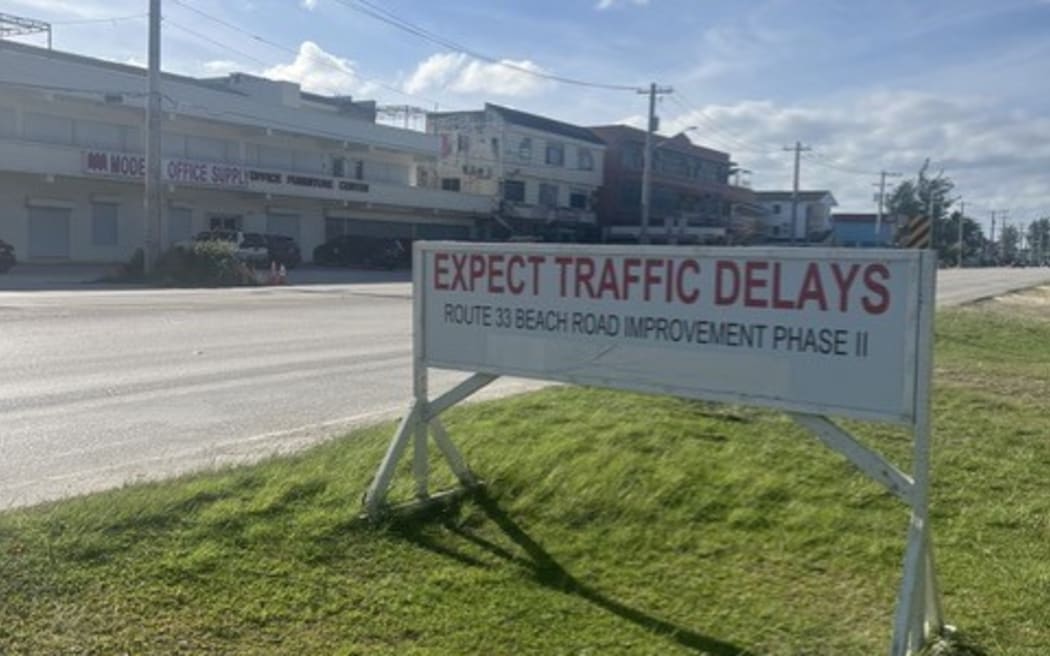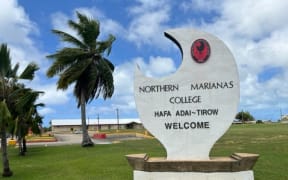
Mariana Islands Cycling Federation president Vince Seman said wider bike lanes is welcome news. Photo: Supplied
Cyclists in Saipan are heaving a big sigh of relief with the incorporation of bike lanes--at least in Phase 2 of the Beach Road rehabilitation project spanning from As Perdido to the Atkins Kroll intersection in Oleai.
Mariana Islands Cycling Federation (NMICF) president Vince Seman said wider bike lanes is welcome news to the island's growing cycling community even if it's just a few miles on Route 33.
He said the federation did not provide specific input on the bike lanes but were grateful to the community for looking out for cyclists during the ongoing road improvement projects.
"As cycling continues to grow, the public needs to be vigilant and courteous in sharing the road with cyclists," he said.
"Cyclists also need to be mindful of following the rules of the road and avoid unnecessarily occupying the car lanes, especially when riding in groups.
Saipan Cyclers Association coordinator Jay Diyco said the new bike lanes along Beach Road could not come any sooner for avid cyclists like him.
"Bike lanes are really important on the roads since the cycling community grew these past few years. It is for the safety of the bikers and to avoid accidents."
Rick Castro and Florence Antonio, two bikers who were involved in bike-auto accidents in the past, said the new bike lanes will improve cyclists' safety in an otherwise perilous stretch of roadway.
Castro said aside from wider bike lanes, motorists should also be cognisant of the law that essentially provides cyclists three feet of distance between them and vehicles on the road.
"They should create awareness by educating new drivers on including some questions pertaining to cyclists' safety on the written test for driver license applicants," Castro said.
Attract tourists
Florence, meanwhile, added that bike lanes will hopefully attract more tourists.
"A bike lane is a good idea as it's one way to attract tourists! Tourists can freely bike safely around our small island," he said.
Department of Public Works (DPW) senior highway engineer Henry Bautista provided an update on the agency's plans for bike lanes as part of the $27 million facelift of Beach Road.
He said bike lanes will be located on both sides (north and south bound) of Route 33 from As Perdido in Chalan Piao to the aforementioned Atkins Kroll intersection along Chalan Monsignor Guerrero Road.
The single bike lane for each way will be three feet wide and will have retro-reflectivity delineators and signs on the road shoulder.

Department of Public Works senior highway engineer Henry Bautista provided an update on the agency's plans. Photo: Supplied
Bautista said completion date was originally set on 30 June. However, due to weather and other obstruction along the way, it is anticipated to be extended to the end of September.
"It is important we incorporate a complete street in our roadway design," he said.
"But the biggest challenge that DPW is facing is the available width of the road right of way, as most of our future projects should include road shoulders for bikers. [This becomes a problem] if the available right of way is limited to incorporate bike lanes."
DPW secretary Ray Yumul said while bike lanes are already guaranteed in Phase 2 of the Beach Road resurfacing project, their inclusion in Phase 1 (south) will depend on available funding.
"Because of the width of that road, we will have enough space to include bike lanes on both sides for Phase 1, but it is all about funding. Hopefully we are able to secure funding to incorporate bike lanes and sidewalks."
The DPW secretary said bike lanes and pedestrian walkways are all part of their 20-year masterplan.
"We're looking at ways to minimize traffic and encouraging a more robust way of commuting such as [Commonwealth Office of Transit Authority], walking if you're in the village area, and biking.
"There's a big push right now for walkability and biking. With limited funds it makes it a challenge to try and incorporate these safety systems, walkability, and bike lanes. The priority has always been for the road, but we need to start thinking about the safety of the pedestrians and the cyclists," he said.


